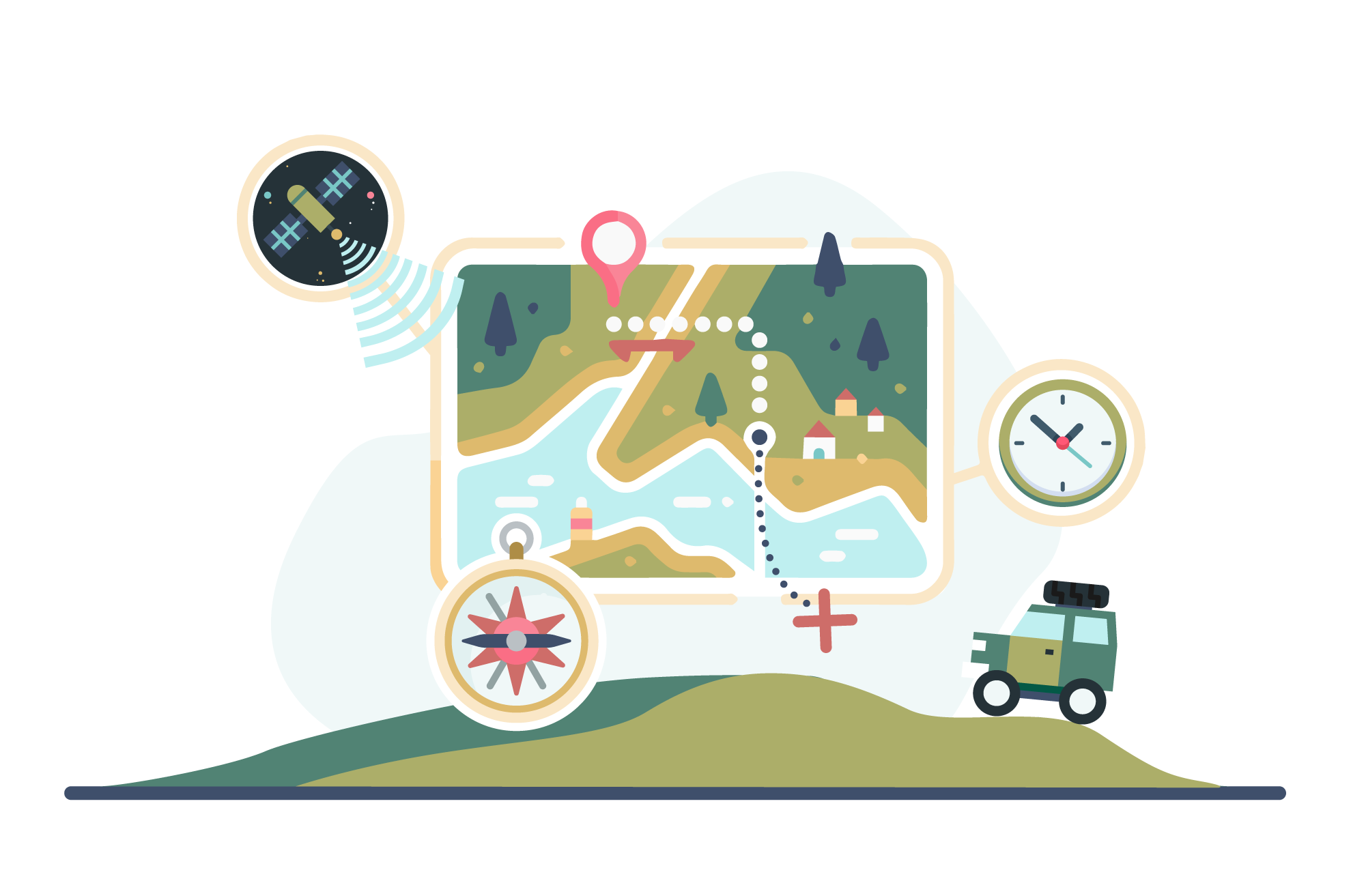
GPS, or Global Positioning System, is a satellite system that provides location, navigation, and time synchronization. It is used in everything from phones to vehicles.
A GPS works through a process called trilateration. This method uses wave signals from multiple satellites to determine your position. Air Force Colonel Bradford Parkinson was the lead architect of the GPS program, earning him the title of ‘father of GPS.’
Getting Started
GPS, or Global Positioning System, is a beneficial technology. It has a wide range of applications, from determining your location on the Earth to tracking the movement of objects or people. It is even used in aircraft, cars, and ships to help navigate and map the world. While the United States pioneered this satellite navigation system, Russia now has its version called GLONASS, and other countries are developing their strategies.
The primary function of a GPS involves sending out radio signals from 24 satellites that orbit the planet. These satellites, operated by the US Space Force, constantly broadcast precise time and location information to GPS receivers worldwide. The receivers listen to at least three satellites to determine the users’ location on Earth using a simple mathematical calculation called trilateration.
Each satellite has several clocks that are continually updated with accurate data. The GPS receiver receives these signals, combines them with the known data of how long each signal takes to travel to the receiver and performs multiple calculations, tracing your location in the process.
GPS is a powerful tool for businesses, governments, and private individuals worldwide. Check out more GPS solutions and devices at RetailMeNot to discover more. Surveyors, natural resource managers, geographers, maps, forestry and agriculture specialists, pilots, boat captains, first responders, and mining companies use it daily to prepare accurate surveys and maps, take precise timing measurements and track their positions.
Basic Concepts
GPS Global Positioning System is a worldwide radio-navigation setup that allows the user to trace his location on Earth’s surface with unprecedented accuracy. It is a collection of satellites and ground receivers that work together to locate the user with a precision of tens or even millimeters.
GPS works on a simple mathematical principle called trilateration. The receiver uses information from at least three satellites to calculate the user’s precise location on the planet’s surface. This three-dimensional location is known as latitude, longitude, and altitude.
The satellites transmit two signals: a series of ones and zeros known as the code and a shorter-wavelength sign called the carrier. The receiver on the ground receives these signals and decodes them to determine the receiver’s location accurately.
The primary method used to achieve this is the Doppler Effect, which uses changes in signal frequencies to determine locations and speeds. For example, if someone is running toward you and throwing a ball at you, the speed of the ball leaving their hands will be greater than the person’s speed because the Doppler effect causes a delay in the signal arriving at your receiver. This technique, however, has some severe limitations that can be overcome by using Differential GPS (D-GPS). This system corrects some of the unintentional errors in traditional GPS systems.
Advanced Concepts
GPS technology allows air, land, sea, and space-based vehicles to determine their three-dimensional position and velocity 24 hours a day. This is accomplished through satellite signals that transmit navigation pulses to GPS receivers that can triangulate a user’s location and provide timing information within a millionth of a second. This positioning data is provided free of charge to all users worldwide.
GPS was first developed for military purposes and is a worldwide radio-navigation system operated and controlled by the United States Department of Defense. However, the government made it available for civilian use in the 1980s. Today, the satellite constellation consists of at least 24 operational satellites that orbit Earth and emit continuous navigation signals. The system can be used anywhere in the world, regardless of weather conditions, and requires no subscription or setup charges.
Like any system, GPS has limitations. Atmospheric interference can interrupt signals, such as solar storms and heavy cloud cover. Also, a satellite’s ephemeris may be inaccurate, or a GPS device’s hardware could malfunction. In addition, other devices, such as cellular phones and Wi-Fi, can interfere with the GPS signal. Because of these limitations, it’s essential for businesses that utilize GPS to create protocols for collecting and documenting data, focusing on consistency and accuracy. This will ensure that future analyses can be performed based on a consistent and reliable data source.
Using Your GPS
GPS has become a regular feature in our cell phones for most of us. When you call 911 or another emergency number, your phone automatically tracks your location and dispatches trained workers to help. Many other GPS-enabled devices, including navigation and travel gadgets, also use the technology.
GPS is a constellation of 30+ satellites that circle Earth and transmit one-way signals to GPS receivers, such as those in your phone or car. By calculating the time it takes for a signal to reach your receiver from a given satellite, the device can determine its distance from the satellites and figure out exactly where you are.
Some factors can affect accuracies, such as atomic clock errors in both the satellites and your receiver or atmospheric effects like Doppler distortion. Accuracy tends to be better in open areas where no tall buildings block satellite signals. GPS also can’t work underwater or underground, although some high-sensitivity GPS receivers may track signals in caves or tunnels.
Some GPS systems allow you to mark specific waypoints — artifacts, streams, or rock formations, for example. These are stored in the device and can be accessed later to create maps of your journey. More complex scientific GPS systems can also be used to create and compare 3D models of the world’s landscape.